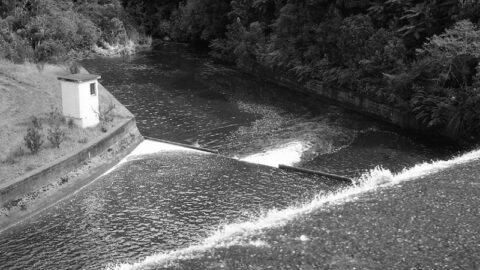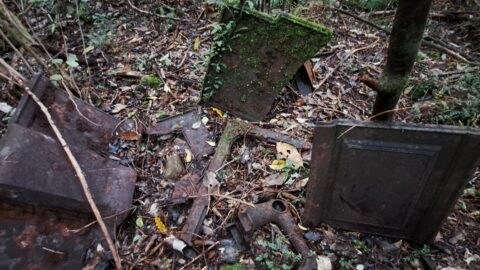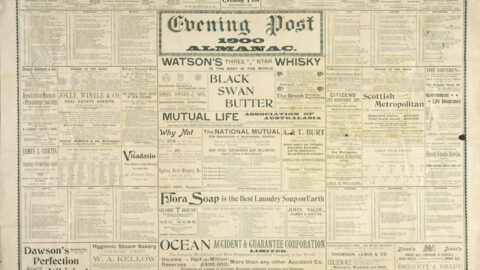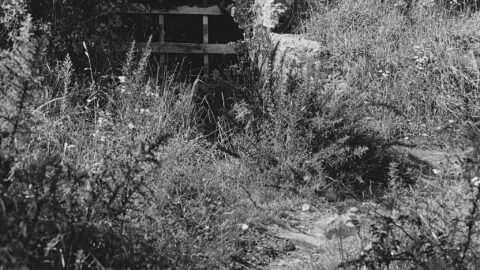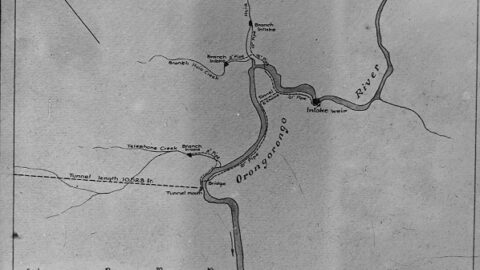The Wainuiomata Watershed – An Important Point
At the ordinary fortnightly meeting of the Waste Lands Board held this afternoon, there being present Messrs J. G. Holdsworth (Commissioner of Crown Lands), H. Bunny, T. Mason M.H.R., and W. W. Taylor, the following communication was received from the Mayor of Wellington:
City Council Offices, Wellington, 7th February, 1883.
Gentlemen – Having ascertained from a search of the Land Office Register that section 94, Wainuiomata district, containing 640 acres, has not passed out of the possession of the Crown, I respectfully request, on behalf of the citizens of Wellington, that it may be reserved from sale.
I am aware that application has been made for the land in the names of J. and D. Sinclair, but that application is specially minuted in the Land Office records as being “subject to the approval of the Waste Land Board.” That approval has not yet been given, and the sale has not gone beyond the “application” stage.
The land described is in the watershed area of the Wainui-o-mata water system, upon which the Wellington Corporation has spent the large sum of £130,000, and the Land Board would perform a great public service by reserving the land from sale. I therefore earnestly hope the Board will see its way to grant this request.
I have the honour, &c., George Fisher, Mayor.
The Commissioner said he would like to put the Board in possession of the facts of the case. Sections 34, 35 and 36 were sections that had been selected under the New Zealand Company’s regulations, and had come into the hands of the Sinclairs. In fact, they were thrown up by others and were granted to them by the Government as far back as 1867.
Now, on the 10th February, 1874, the sons of Mr Sinclair, deceased, and others – George Michael Nation and Robert O’Connor – applied for 640 acres of pastoral land. They paid £120 in cash, and another £120 in volunteer scrip, taking the land in question at 7s 6d per acre. This application was duly dealt with, and it was granted, “subject to survey, to prior selections, and to the approval of the Waste Lands Board.” Till within the last few months, the land had not been surveyed, and the Surveyor’s report not yet having been received, the approval of the Waste Lands Board had not been given.
Mr Mason observed that the land was certainly “pastoral,” if not more inferior even than that. The Commissioner thought the Board ought not to deal further with the matter until the surveyor’s report had been received.
Mr Bunny would be glad, if possible, to comply with the request of the Mayor. They must bear in mind that to the Sinclairs themselves this matter did not now signify anything.
Mr Mason – What position will they be in then?
Mr Bunny – They will get their money and scrip back again of course.
The Commissioner said no doubt these would have to be refunded if the Mayor’s request were acceded to. But the question was, was the fact of attaching a special value to the land to-day to influence the Board in committing an action which they probably would not have done two years ago?
Mr Bunny pointed out that by acceding to the Mayor’s request they would not be injuring a single private individual, because the Sinclair estate had been sold and had fallen into the hands of speculators. He thought the Board ought to reserve the land if possible. He was prepared to move to that effect.
The Commissioner suggested that the motion should take the following form: “That further consideration of the matter be postponed pending the receipt of the surveyor’s report.” For himself, he was only anxious they should do what was right in the matter; and in every case coming before them the Board had decided applications for pastoral land upon the character of the land itself, apart from any surrounding circumstances.
Mr Bunny accepted the suggestion, and the motion was then unanimously agreed to.
Mr Mason would like to know something of the position of the Sinclairs in the matter. It did not seem to be quite fair to them altogether. It was extraordinary, moreover, that the Corporation did not take pains to secure their watershed before commencing such large works.
The Commissioner here produced several maps of the locality and made the following explanation: The Messrs Sinclairs’ previous purchases, as far back as 1867, took in the whole of the water supply in Moore’s Valley from section 26 to section 70, and the 640 acres of pastoral land applied for in 1874 were behind those sections, forming a very material security for the noninterference with the waters of the Wainuiomata, and with 64,000 acres withheld from sale formed the principal source of the water supply.
The matter then dropped.
Tags: Newspaper Sinclair Waterworks
